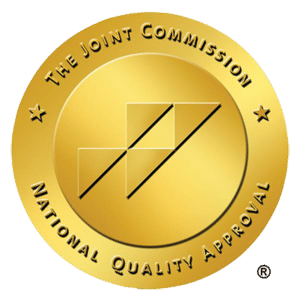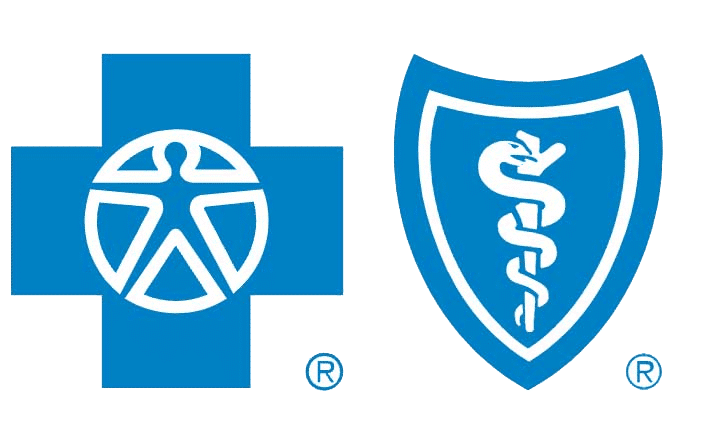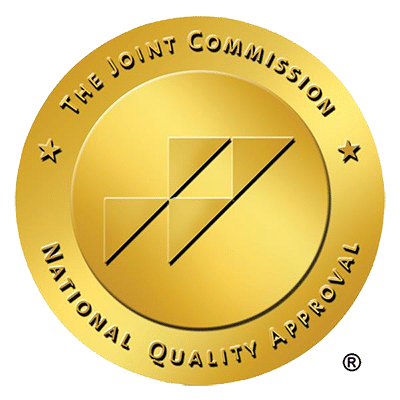Fatal fentanyl overdoses have been rising at alarming rates. In 2021, over 106,000 drug overdose deaths were reported. Of those, 70,601 deaths were tied to synthetic opioids, with the majority being fentanyl. To put this into perspective, fentanyl is related to more deaths in the United States for people under the age of 50 than any other cause of death, including car accidents. There’s no way around it — fentanyl is currently the most dangerous street drug in America, and without some changes, the number of overdoses will continue to rise.
Fentanyl goes by several street names, including China Girl, Dance Fever, Friend, Great Bear, He-Man, Jackpot, Murder 8 and many others. It can be taken via pill, snorted, spiked onto blotter paper, or combined with other substances. It’s nearly impossible to detect if someone isn’t looking for it, and it’s commonly used to cut other illicit substances. All of these factors, paired with its high potency and how little is needed to overdose, make it exceedingly dangerous, but the rate of use continues to grow.
What is Fentanyl?
Fentanyl is a synthetic opioid typically prescribed by doctors as a way to manage severe pain, particularly for those who have recently had surgery or who have advanced-stage cancer. It’s 50 times stronger than heroin and up to 100 times stronger than morphine, making it highly effective at pain management but also an attractive option for substance abuse.
People abusing fentanyl typically use illegally made fentanyl, which can be used in liquid and powdered forms. It can be mixed into other drugs, such as cocaine and methamphetamines, potentially leading to an overdose when people are unaware that their drugs have been laced.
Is Tranq Dope More Dangerous Than Fentanyl?
Tranq Dope is a combination of fentanyl mixed with xylazine. Xylazine is a powerful sedative used in veterinary settings. According to the U.S. Drug Enforcement Administration (DEA), in 2022, around 23% of fentanyl powder and 7% of fentanyl pills that were confiscated also contained xylazine. This combination increases the risk of drug overdose, and because xylazine isn’t an opioid, overdose can’t be reversed with naloxone.
Because of xylazine’s synergistic effects with fentanyl and its potency, Tranq Dope poses a serious risk to those who knowingly or unknowingly use it.
Side Effects of Fentanyl
Many times, substance abusers are chasing the “high” produced by fentanyl, which can create a sensation of relaxation and euphoria while also relieving pain. Other side effects of this drug include:
- Sedation
- Drowsiness
- Confusion
- Constricted pupils
- Slower breathing (respiratory depression)
- Urinary retention
- Nausea and vomiting
- Incoherence or slurred speech
Signs of Fentanyl Overdose
If you see someone you suspect has overdosed on fentanyl, there are some easily recognizable signs. Knowing these signs can save precious minutes that could be enough to save their life. Signs of a fentanyl overdose include:
- Pinpoint pupils
- Loss of consciousness or falling asleep
- Limpness
- Gurgling or choking sounds
- Clammy, cold skin
- Discoloration of the skin, especially around the lips and nails
If these signs are present, contact emergency services immediately, and administer naloxone according to packaging instructions if you have it on hand. This may reverse the overdose.
Why Is It So Easy to Overdose on Fentanyl?
Fentanyl is highly potent, with only two milligrams having the potential to cause an overdose. This, paired with its addictive nature, spurs people abusing the drug to take more to get the intended effects as they develop a tolerance to it. Additionally, fentanyl has no smell or taste, so people who accidentally overdose can consume the drug without knowing, making it easier to ingest enough to be dangerous. The only way to know if a drug has been laced with fentanyl is to use a fentanyl test strip, which many people don’t have easy access to.
Because fentanyl is relatively low in cost, it’s commonly used to mix into other drugs to provide the intended effect while improving profit margins for dealers. However, because this is typically not disclosed, people thinking they are using other drugs, such as cocaine, heroin and methamphetamine, may unintentionally use fentanyl and overdose or cause a fatal interaction between the drugs.
Additionally, illicit fentanyl is not regulated, meaning its potency isn’t either. Consuming any amount of fentanyl could potentially lead to overdose or death.
Signs of Fentanyl Addiction
In some cases, people become addicted to fentanyl while using the drug as prescribed by a medical professional. Others may become addicted after using illicit drugs for a period of time. If you suspect that you or a loved one has an addiction to fentanyl, you may notice the following signs:
- Using opioids or fentanyl longer than intended or beyond when it was prescribed
- Spending a significant amount of time seeking and using fentanyl
- Developing cravings to use fentanyl
- Developing an inability to complete daily tasks and responsibilities, such as taking care of your home or being unable to keep up with school or work
- Abandoning activities that were once enjoyable in favor of using fentanyl
- Developing a tolerance to fentanyl and needing to take larger doses to get the intended effect
- Experiencing withdrawal symptoms when not using fentanyl
- Damaging relationships due to fentanyl use
- Continuing to use fentanyl after acknowledging that it is causing problems in life
Want to Learn More?
Our addiction recovery team is here 24/7 to answer your questions or to get you help.
The Fentanyl Withdrawal Timeline
Fentanyl withdrawal symptoms may last between four to ten days, depending on the route of administration. Fentanyl withdrawal occurs as soon as six to twelve hours after cessation and can peak around day three before slowly fading away. The severity and duration of the withdrawals might be made easier with proper support from professionals at addiction treatment centers or healthcare workers who understand how long does fentanyl withdrawal usually take for a full recovery. There are two phases involved in this process: an acute stage that manifests physical side effects followed by a prolonged period during which cravings could linger weeks or months later even when all other signs have gone away completely, making it essential for individuals affected to know what they should expect from their detoxification experience ahead of time while relying on helpful resources available throughout its course.
Factors Influencing Fentanyl Withdrawal Severity and Duration
When it comes to fentanyl withdrawal, many factors can have an impact on the severity and length of time that symptoms last. This includes one’s degree of dependence, co-dependence levels, genetics and lifestyle habits which should all be taken into account when creating a treatment plan for optimal recovery results.
The amount of intensity that someone will experience their withdrawal symptoms is closely linked with how dependent they are on the drug. Those who struggle more heavily from addiction may find themselves facing stronger side effects than others do. Those dealing with psychological attachment issues or dual addictions might also encounter complications resulting in long-term withdrawals as well due to this additional layer making it harder to overcome dependency altogether. Certain genetic elements could alter just exactly what someone goes through during these trying times although more research still needs exploring regarding this connection specifically before any final conclusions are made about its role here completely. Finally, changes people make within their regular routine – like improved dieting behaviors , increased exercise regimens or different social engagements –can each help better manage possible discomforts associated with going cold turkey off fentanyal use if done so gradually over time correctly under medical supervision accordingly too then after either way likewise beyond such as obviousness Speaking respectively but conversely though ambiguously enough at least relatively rather thereof by comparison even hypothetically Both theoretically overall tangibly indeed comparatively maybe definitely especially most significantly Thus being said contrarywise emphatically, presumably otherwise yes quite logically potentially certainly.
Coping Strategies for Fentanyl Withdrawal
In order to help achieve successful recovery from fentanyl withdrawal, it is important to utilize the appropriate coping strategies. One such strategy can be consulting with a medical professional who will assist in creating an individualized plan of action. Activities that are both beneficial and enjoyable should also be included in one’s routine during this time. Physical exercise is especially helpful as it not only provides distraction but may reduce stress levels while releasing endorphins which elevate mood. Maintaining proper hydration along with consuming nutritious meals and obtaining sufficient rest helps ensure body support through the process of withdrawal. Lastly, cognitive-behavioral therapy (CBT) works well for those dealing with drug addiction by recognizing damaging thought patterns connected to use so they can then make suitable modifications necessary toward sobriety once again.
Medically Assisted Fentanyl Detoxification
Fentanyl detox is a necessary part of the recovery process, allowing individuals to eliminate fentanyl and other substances from their body under medical supervision. This can help control cravings as well as manage withdrawal symptoms that may arise when quitting opioid addiction. It’s important to note that despite its effectiveness in reducing potential relapse rates, relying solely on this method will not provide sufficient results since Treatments are needed for comprehensive care. Something which includes medication-assisted treatment (MAT) and behavioral therapy. Combining these approaches together with detox offers an efficient way to battle against any form of opiate dependency such as fentanyl addiction for safer outcomes long term.
Medications for Fentanyl Withdrawal
In fentanyl detox, the use of FDA-approved medications such as methadone, buprenorphine (Suboxone), and naltrexone can help reduce withdrawal symptoms while supporting recovery through curbing cravings. Lofexidine hydrochloride – an approved non-opioid treatment by the FDA in 2018, is also used to ease intensity when discontinuing fentanyl. Healthcare providers should monitor these medications carefully for successful detoxification.
Inpatient vs. Outpatient Detox
When deciding between inpatient and outpatient detox programs, many factors come into play. The level of support desired, the severity of addiction, as well as financial constraints will all be taken into account for selecting a suitable program that meets an individual’s needs. Inpatient facilities are more structured with greater assistance being provided along with oversight by medical personnel who administer medication-assisted treatment together with therapy options such as counseling and group sessions aimed at supporting individuals to manage withdrawal symptoms while providing necessary aftercare plans upon completion of their drug rehab journey. Outpatients offer flexibility, allowing one to receive the same kind of treatments but from home. This may include regular check-ins from healthcare professionals providing them with help on gradually getting off opioids like fentanyl. Accessing medicated remedies prescribed specifically tailored for each patient’s situation alongside counselling services required during addiction treatment periods.
Comprehensive Treatment for Fentanyl Addiction
The treatment of fentanyl addiction should address each person’s unique needs through established therapies and medication. Detoxification alone is not enough for long-term success, so treatments may include cognitive behavioural therapy (CBT), personal or group counselling, as well as medications such as methadone, buprenorphine (Suboxone) or naltrexone. CBT helps change behaviours linked to drug use while counseling provides an understanding space to identify the foundation of one’s dependence and develop helpful strategies in response. Group work can also be valuable by creating a sense of community with those going through similar experiences, which gives extra reinforcement when combating their dependency issues from all directions (including detoxification) providing a greater chance at lasting recovery.
Risks of Unsupervised Fentanyl Withdrawal
The hazards of trying to quit fentanyl without the help of a doctor can be serious, such as an increased probability of relapse and ailments like dehydration or elevated sodium levels. Unmonitored withdrawal from fentanyl may bring about intense effects and other possible issues including hydration deficiency, electrolyte abnormalities, as well as cardiac complications.
It is worrying how unassisted stopping of this drug could impact recovery due to its challenging nature when handling detox symptoms with no professional help. Consequently leading one to turn back towards drugs for comfort relief. Receiving suitable medical assistance is necessary in order to make sure success during treatment, along with avoiding any health risks associated with attempting self-detoxification from fentanyl usage.
Finding Help for Fentanyl Withdrawal and Addiction
For those struggling with fentanyl withdrawal and addiction, treatment programs like Mayflower Recovery in Wilmington offer supervised detox services as well as comprehensive recovery plans. By reaching out for help from healthcare professionals or support networks such as community groups, individuals can access the care they need to successfully manage their substance use disorder and initiate a journey towards lifelong sobriety. With assistance available at specialized centers along with other resources, people can reclaim control of their lives.
Summary
Facing fentanyl withdrawal can be an overwhelming and complex process, but understanding the factors that affect its duration as well as recognizing both physical and emotional symptoms of addiction may help those in need to move along this difficult journey. Professional assistance with comprehensive treatment – such as medically assisted detoxification, evidence-based therapies or peer support networks – is key for recovery from fentanyl dependency. Remember you don’t have to go through it alone! Get aid now while constructing reliable grounds for long term success away from drug abuse.
Frequently Asked Questions
What are the common physical symptoms of fentanyl withdrawal?
Fentanyl withdrawal can manifest with physical effects such as body aches, flu-like symptoms and dehydration which might necessitate medical attention.
How long does fentanyl withdrawal typically last?
The withdrawal symptoms from fentanyl typically reach their peak on the third day and then start to diminish, lasting approximately one week. Cravings may stay for a few weeks or months afterwards.
What factors can influence the severity and duration of fentanyl withdrawal symptoms?
The intensity and duration of fentanyl withdrawal symptoms may be impacted by factors such as dependence severity, co-dependence, heredity or family history, and lifestyle. These elements all factor into the length of time needed for successful recovery from a period of cessation due to opioid use.
What are some effective coping strategies for managing fentanyl withdrawal symptoms?
For individuals experiencing fentanyl withdrawal, consulting a medical professional is the best way to manage symptoms. Other recommended strategies include staying hydrated and eating healthy while making sure to stay active through physical exercise.
What is the difference between inpatient and outpatient detox programs for fentanyl withdrawal?
For those detoxing from fentanyl, inpatient programs offer a more rigid environment with increased medical care during the withdrawal period. For greater flexibility and convenience, outpatient programs allow individuals to stay at home while still receiving treatment.
Related Posts

Critical Signs of Meth Addiction: Symptoms & Support Options
Wondering what are the warning signs of meth addiction? Early detection can be lifesaving. From drastic behavioral swings to ‘meth mouth,’ these symptoms are alarming

Essential Guide on How to Help Someone with Meth Addiction
If you’re seeking to understand how to help someone with meth addiction, this article is your immediate support guide. Encountering meth addiction within someone you

Recognizing the Warning Signs of Marijuana Addiction
Knowing the signs of marijuana addiction is vital for recognizing a serious problem that often goes unnoticed. In this article, we address the real indicators

Decoding Opioid Addiction Statistics: A Harsh Reality Check
What do the numbers say about the opioid crisis? Diving into opioid addiction statistics offers a sobering reality check: a surge in usage and deaths

Effective Strategies on How to Prevent Opioid Addiction
The key to preventing opioid addiction starts with being informed. If you’re seeking concrete steps on how to prevent opioid addiction, this article is for

How to Help Someone with Cocaine Addiction Effectively
Wondering how to help someone with cocaine addiction? It can feel overwhelming, but your role is crucial. In this guide, you’ll find understandable and practical















